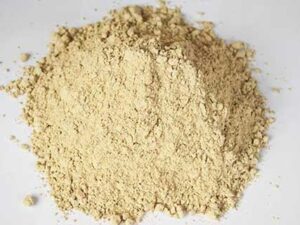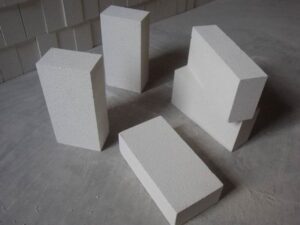Description
Ultra-Low Cement Castables: A Deep Dive into Performance and Applications
In the demanding world of high-temperature industrial processes, the performance of refractory materials is paramount. Among the various types of refractories, castables have gained significant popularity due to their ease of installation and performance characteristics. Within the castable family, Ultra-Low Cement Castables (ULCCs) represent a cutting-edge solution, offering enhanced properties and extending the lifespan of critical equipment.
This article delves into the intricacies of ULCCs, exploring their composition, benefits, applications, and the factors contributing to their superior performance.
What are Ultra-Low Cement Castables?
ULCCs are a type of castable refractory that utilizes a dramatically reduced amount of cement compared to conventional castables. Typically, cement content in ULCCs ranges from 1% to 3%, a stark contrast to the 15-30% typically found in traditional castables. This significant reduction necessitates the use of sophisticated additives, such as fine reactive alumina, silica fume, and deflocculants, to achieve the desired flowability, setting, and strength.
The Advantage of “Less is More”: Benefits of ULCCs
The low cement content in ULCCs translates to a multitude of benefits, making them a preferred choice for demanding applications:
- Enhanced Thermal Shock Resistance: The reduced cement content minimizes the formation of calcium aluminate hydrates during setting. These hydrates are prone to cracking under thermal stress. Consequently, ULCCs exhibit significantly improved resistance to thermal shock, crucial for applications involving rapid temperature fluctuations.
- Lower Porosity and Higher Density: The finer particle packing achieved through the use of sophisticated additives results in lower porosity and higher density. This leads to improved resistance to slag and chemical attack, minimizing penetration and corrosion.
- Increased Hot Strength: Lower cement content translates to less calcium aluminate phases at high temperatures, which can weaken the refractory structure. ULCCs exhibit superior hot strength, enabling them to withstand higher service temperatures and heavier loads.
- Reduced Shrinkage: The lower water requirement due to reduced cement content minimizes shrinkage during drying and firing, leading to improved dimensional stability and reduced cracking.
- Improved Wear Resistance: The higher density and strength of ULCCs contribute to enhanced resistance to erosion and abrasion, extending the lifespan of the refractory lining.
- Energy Savings: The lower porosity of ULCCs reduces heat loss through the refractory, leading to improved thermal efficiency and potential energy savings.
Applications Spanning Diverse Industries
The superior properties of ULCCs make them suitable for a wide range of applications across various industries:
- Iron and Steel Industry: ULCCs are extensively used in ladles, tundishes, electric arc furnaces (EAFs), and blast furnace troughs due to their excellent resistance to slag attack, thermal shock, and abrasion.
- Cement Industry: They find application in kiln linings and preheaters, where they withstand the corrosive environment and high temperatures.
- Petrochemical Industry: ULCCs are used in reactors, crackers, and reformers, offering resistance to chemical attack and high-temperature erosion.
- Power Generation: Their thermal shock resistance and strength make them ideal for boiler linings and incinerators.
- Non-Ferrous Metal Production: Used in smelters, converters, and holding furnaces for processing aluminum, copper, and other non-ferrous metals.
Factors Contributing to Superior Performance
The exceptional properties of ULCCs are a result of careful design and precise control over various factors:
- Particle Size Distribution: Optimization of particle size distribution is crucial for achieving dense packing and minimizing porosity.
- Additive Selection: The choice of deflocculants, dispersants, and reactive alumina fines plays a vital role in controlling flowability, workability, and setting characteristics.
- Mixing and Placement Techniques: Proper mixing and vibration during placement are essential for achieving uniform density and preventing air entrapment.
- Curing and Drying: Controlled curing and drying processes are critical for developing the desired strength and minimizing shrinkage.
Conclusion: Investing in Longevity and Efficiency
Ultra-Low Cement Castables represent a significant advancement in refractory technology. While often requiring a higher initial investment, the superior performance and extended lifespan of ULCCs translate to long-term cost savings through reduced downtime, lower maintenance costs, and improved energy efficiency. As industries continue to demand more from their refractory linings, ULCCs are poised to remain a cornerstone solution for high-temperature applications, contributing to enhanced productivity and operational efficiency. By understanding their composition, benefits, and application parameters, engineers and operators can effectively leverage ULCCs to optimize the performance and longevity of critical industrial equipment.













Reviews
There are no reviews yet.